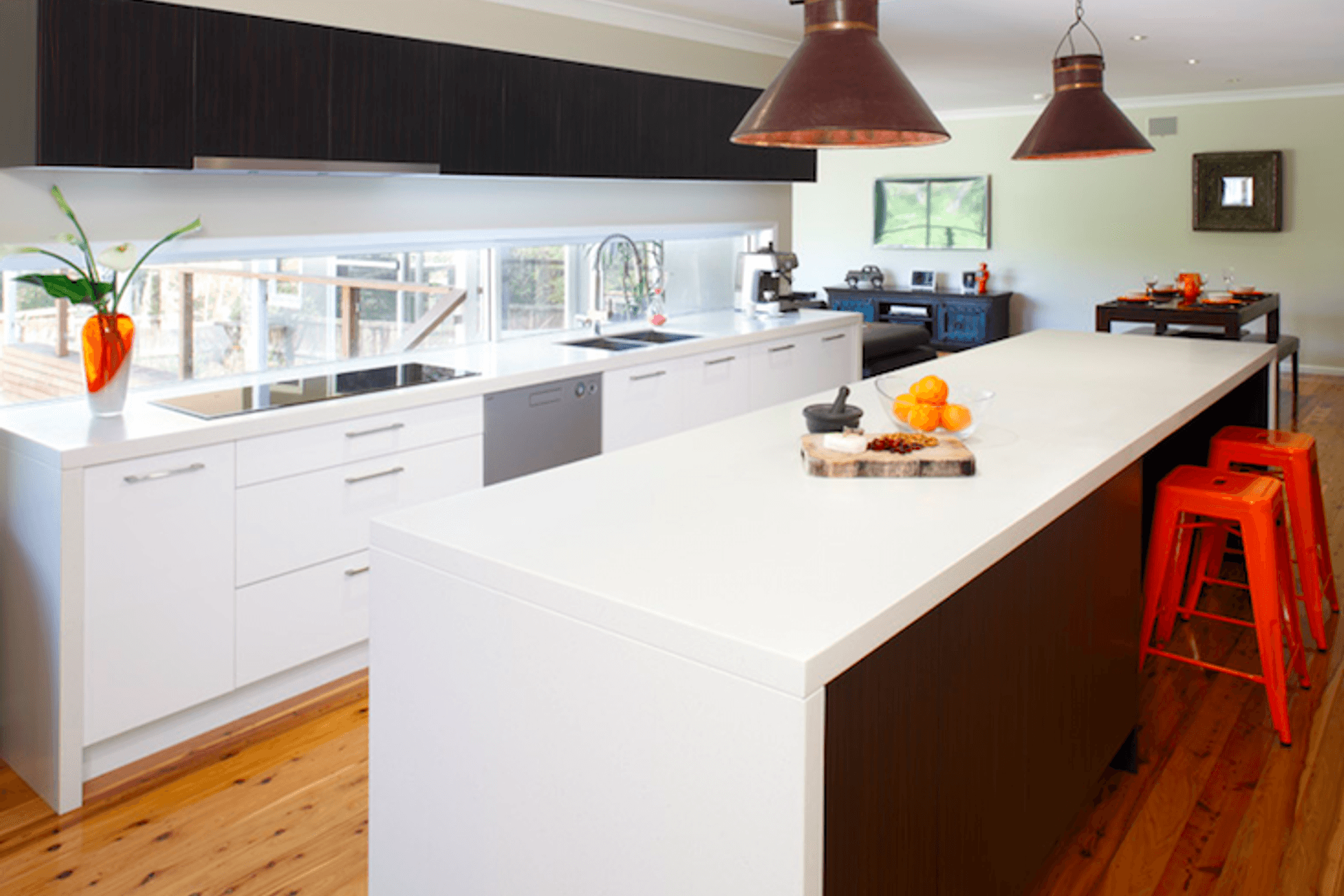Natural Or Reconstituted Stone… What’s The Difference?

You want to use stone for your kitchen and bathroom bench tops but aren’t sure what to choose. Natural or reconstituted stone?
When deciding consider practicality as well as aesthetics. Frequently used areas require durability and longevity . There’s no point in installing a beautiful, expensive stone only to find it stained and disintegrating quicker than expected.
To help with your decision we explain the difference between the two types of stone available
Natural Stone
Natural stone is exactly what it suggests. Formed naturally over thousands of years and quarried at various locations worldwide. No two pieces will be the same. Natural stone is raw, elegant and unique.
Naturally forming stone has a wide variety of colour, veining, style, structure and porosity. The look of your stone is organic and down to Mother Nature. There are no guarantees for a particular ‘look’. However, you should have the option of choosing a particular ‘slab’ where you can see the natural colour and pattern formations.
Stone such as marble, limestone and granite are generally more expensive. However, they are full of character and will be a beautiful feature in any home.

If you hold a piece of natural stone to the light you will see tiny bumps and pores on its surface. Known as ‘pitting’. Pitting is where grime and dirt can collect and why natural stone surfaces are more likely to stain and be less durable.
Some household cleaners and acidic foods (such as lemon and vinegar) can cause damage to your natural stone. Correct maintenance and regular use of a professional surface sealant can minimise this and help protect against any damages.
Note: Natural stone can be stain, chip and scratch resistant but definitely not stain, chip and scratch proof!
Also, more expensive does not always mean better. You may find that a higher priced piece of stone may be softer and more porous, and therefore less durable than others.
Engineered (or reconstituted) Stone
Engineered stone is a man-made product. It was first manufactured in the 1980’s when high demand began for a more consistent looking product. Engineered stone benchtops are very popular and are much lighter than natural stone.
The slabs are made using recipes which gives consistency in aesthetics. You can customise the design and ‘look’ of your stone through choices of colour, texture and composition. Be aware that although you can choose a particular colour your slab may not be exactly the same shade or tone as the viewed sample. There will be slight variations in colour of raw materials used.
How is it made?
Natural stone is cut from a quarry or mountain. It’s then put through a manufacturing process. This process is where the natural stone is crushed down and then bound with an acrylic resin. Manufacturers are able to add other raw materials to increase the strength, quality, performance and lifespan of the product. The main component used to achieve this is a naturally forming quartz which is a highly strong mineral.
The engineering process of reconstituted stone creates a much smoother and non-porous finish. This makes it extremely resistant to staining, scratching or cracking. It’s also super hygienic for the kitchen.
Reconstituted stone is high performing but low maintenance. It’s easy to clean, durable and sustainable. Generally more affordable than natural stone and is beautifully engineered for modern day living.
This product is manufactured in specific sheet sizes. So be aware that there are limitations with sizes.

Conclusion – Natural or Reconstituted Stone?
Currently the majority of home owners are opting to have natural stone. This is due to not yet understanding the differences between natural and engineered stone. However, the popularity of reconstituted surfaces is slowly growing.
Neither is ‘better’ than the other. It just comes down to whether natural or engineered stone is most suitable to a person’s needs and budget.
Natural stone is considered the expensive option. However, take into consideration factors such as design, kitchen orientation and possible wastage then engineered stone has potential to cost more.
Of course, budget is an important factor in anything. But shouldn’t be the defining reason to choose one stone over another. Work out what your needs are. Consider how you want the stone to look and feel in your home and also what application it will serve. Then you should be able to make the right choice for you and your home.
